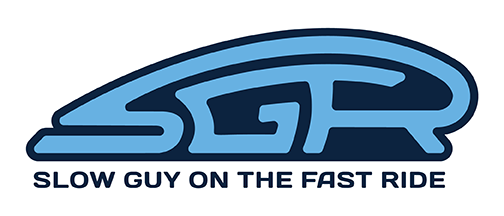Drivers are the problem. Can our bikes be the solution? Cannondale has integrated many of the most effective tools a cyclist has to counter inattentive drivers into the new Synapse with SmartSense technology.
SmartSense integrates lights and a rear-facing radar, all connected to a single rechargeable battery. Once you set it up the first time, it all turns on automatically as soon as your bike’s front wheel starts turning.
The Synapse’s integrations work all the most common tools cyclists already use into a programmable package that you can tinker with to your heart’s content, or simply set and forget.
Let’s take a look at the nuts and bolts.
RELATED:
- Chapter 2 Toa: Lemme See That!
- Hunt 42 Limitless Gravel Disc Wheels: Lemme See That!
- Orucase B2-R bike travel case review
The Synapse’s SmartSense

The Synapse’s SmartSense system includes a central battery mounted to the down tube. It powers a headlight and a tail light (both designed in conjunction with Lezyne) and a rear-facing radar system that Cannondale developed with Garmin.
The SmartSense battery is removable from the Synapse’s down tube, but the cradle in which it sits is fixed to the frame. Cannondale says the battery powers the lights and radar for up to 9 hours, depending on what modes you’re using for the lights. The battery charges via a USB-C port and can be charged either on or off the bike.
The rear-facing radar communicates with your head unit or your phone. It will give you indications of how many cars are close behind you, how fast they’re traveling, and how close they are to you.

The lights are both customizable too. You can set them to flashing, steady, or even light-sensitive so you can conserve power. The rear light can also be set up to act as a brake light to indicate to vehicles behind you that you’re coming to a stop. You can turn on the entire system by pressing the button on the battery, or simply by spinning the front wheel. A sensor mounted on the Synapse’s front hub activates the system automatically.
Likewise, when you’re done with your ride, you can turn off the entire SmartSense system by pressing the button on the battery. You can also turn the system on and off using the Cannondale app, or simply by letting the bike sit still. After a few minutes, everything will turn off automatically.
The Cannondale app allows you to customize the system and track battery life. You can also track your activity, your bike’s specific measurements, and much more.
Synapse build and design

While SmartSense is the big news, the Synapse also got some design changes beyond integration. The new Synapse is more aerodynamic, using tube shaping that Cannondale has used on more race-oriented bikes like the SuperSix. Cannondale did not provide specific aero data, however.
Cannondale also says the Synapse is more comfortable than previous versions. The dropped seatstays remain a staple of the compliance design, but Cannondale has also implemented Proportional Response Sizing. That means each size of the Synapse is tailored to optimize all of the compliance features, specifically in that size.

On top of that, the Synapse has clearance for up to 35mm tires with some room to spare. That means you can drop your tire pressure to take full advantage of your tire’s width. This is beneficial for comfort, but also for lowering rolling resistance and increasing grip.
Notably, the Synapse comes with an integrated cockpit. But unlike so many aerodynamic handlebar and stem combos on the market today, the Synapse’s cockpit features a fair bit of adjustability. You can loosen some bolts beneath the handlebar/stem junction to tilt the bars back and forth. That allows you to find an optimal hand position for your riding style. This is a nice touch for endurance riders.
My test bike (size 56cm) weighs 19.69 pounds. This includes the SmartSense components (lights, radar, battery, and associated wires).
Model rundown

The Synapse comes in 5 different models.
- Synapse Carbon 4, $2,400 (SmartSense “ready,” but does not come with SmartSense components)
- Synapse Carbon 3L, $3,300 (Includes SmartSense lights but not radar)
- Synapse Carbon 2 RLE, $5,500
- Synapse Carbon LTD RLE, $7,000
- Synapse Carbon 1 RLE, $9,000
While the lowest pricepoint model does not include SmartSense lights or radar, you can upgrade the bike to SmartSense later if you choose to.
Deciphering the nomenclature is pretty simple: L stands for lights, RL stands for radar and lights, and RLE stands for radar, lights, and electronic shifting. You can check out all the details for each model over on Cannondale’s website.
Want to see a Synapse review?
Just watch the YouTube video and give it a thumb’s up. Any Lemme See That! product that gets 100 thumb’s ups gets a full, independent review right here on Slow Guy on the Fast Ride.





